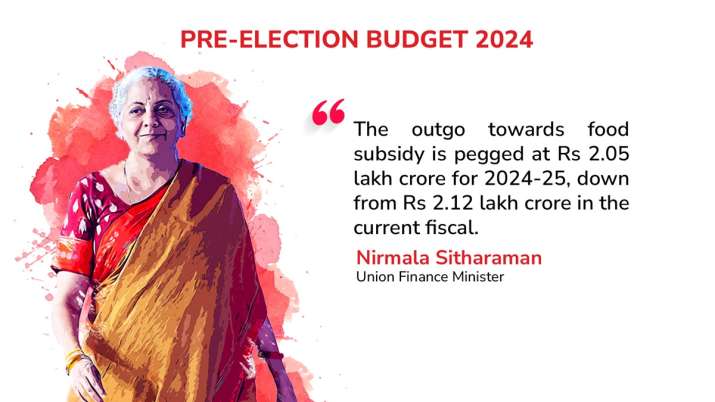Finance Minister Nirmala Sitharaman on Friday presented the interim Union Budget 2024 in the Parliament. In her budget speech, the finance minister termed the budget as a vision document for Viksit Bharat. While presenting the budget, she announced that the capital expenditure outlay for the next year is being increased by 11.1 per cent to Rs 11,11,111 crore, which would be 3.4 per cent of the GDP.
Here are the highlights of the Budget 2024

She announced that the FDI inflow during 2014-23 was USD 596 billion marking a golden era and this is twice the inflow during 2005-14. For encouraging sustained foreign investment, we are negotiating bilateral investment treaties with our foreign partners, in the spirit of ‘first develop India’, the Finance Minister added.

The Interim Budget proposes to withdraw such outstanding direct tax demands up to Rs. 25000/- pertaining to the period up to financial year 2009-10 and up to Rs. 10,000/- for financial years 2010-11 to 2014-15. This is expected to benefit about a crore taxpayers.

Referring to the fiscal consolidation, as announced in her Budget Speech for 2021-22, to reduce fiscal deficit below 4.5 per cent by 2025-26, Smt Sitharaman said, the fiscal deficit in 2024-25 is estimated to be 5.1 per cent of GDP, adhering to that path.

For Railways, three major economic railway corridor programmes will be implemented-energy, mineral and cement corridors, port connectivity corridors, and high traffic density corridors. Moreover, forty thousand normal rail bogies will be converted to the Vande Bharat standards to enhance safety, convenience and comfort of passengers.

On indirect taxes, the Union Minister for Finance & Corporate Affairs Smt. Nirmala Sitharaman said that GST has reduced the compliance burden on trade and industry by unifying the highly fragmented indirect tax regime in India. Mentioning about a recent survey conducted by a leading consulting firm, she said that 94% of industry leaders view the transition to GST as largely positive. In her Interim Budget speech, the Minister highlighted the fact that tax base of GST has more than doubled and average monthly gross GST collection has almost doubled to Rs. 1.66 lakh crore this year. States too have benefited. States’ SGST revenue, including compensation released to states, in the post-GST period of 2017-18 to 2022-23, has achieved a buoyancy of 1.22.

Pradhan Mantri Kisan Sampada Yojana has benefitted 38 lakh farmers and generated 10 lakh employment. Pradhan Mantri Formalisation of Micro Food Processing Enterprises Yojana has assisted 2.4 lakh SHGs and sixty thousand individuals with credit linkages.
Also read: Budget 2024: ‘Disha Nirdeshak Baatein’ is not slogan but governance model, says Sitharaman






































